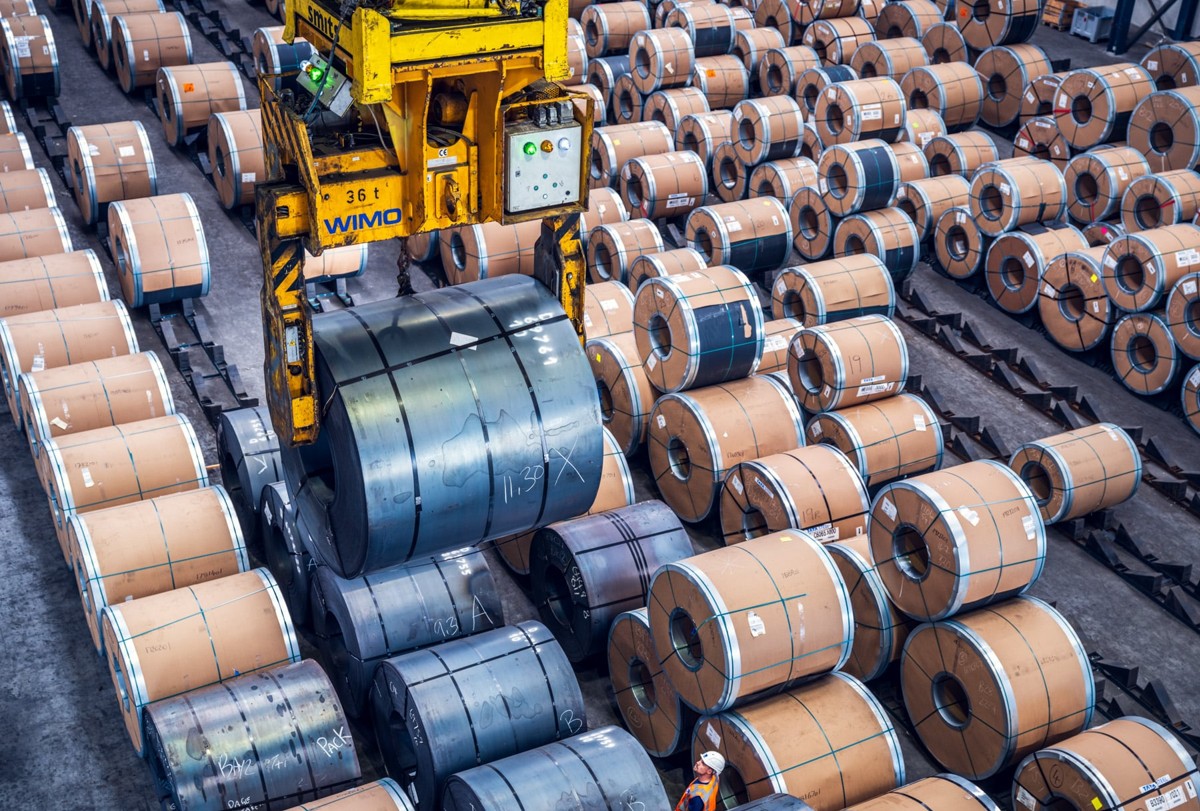Mexico
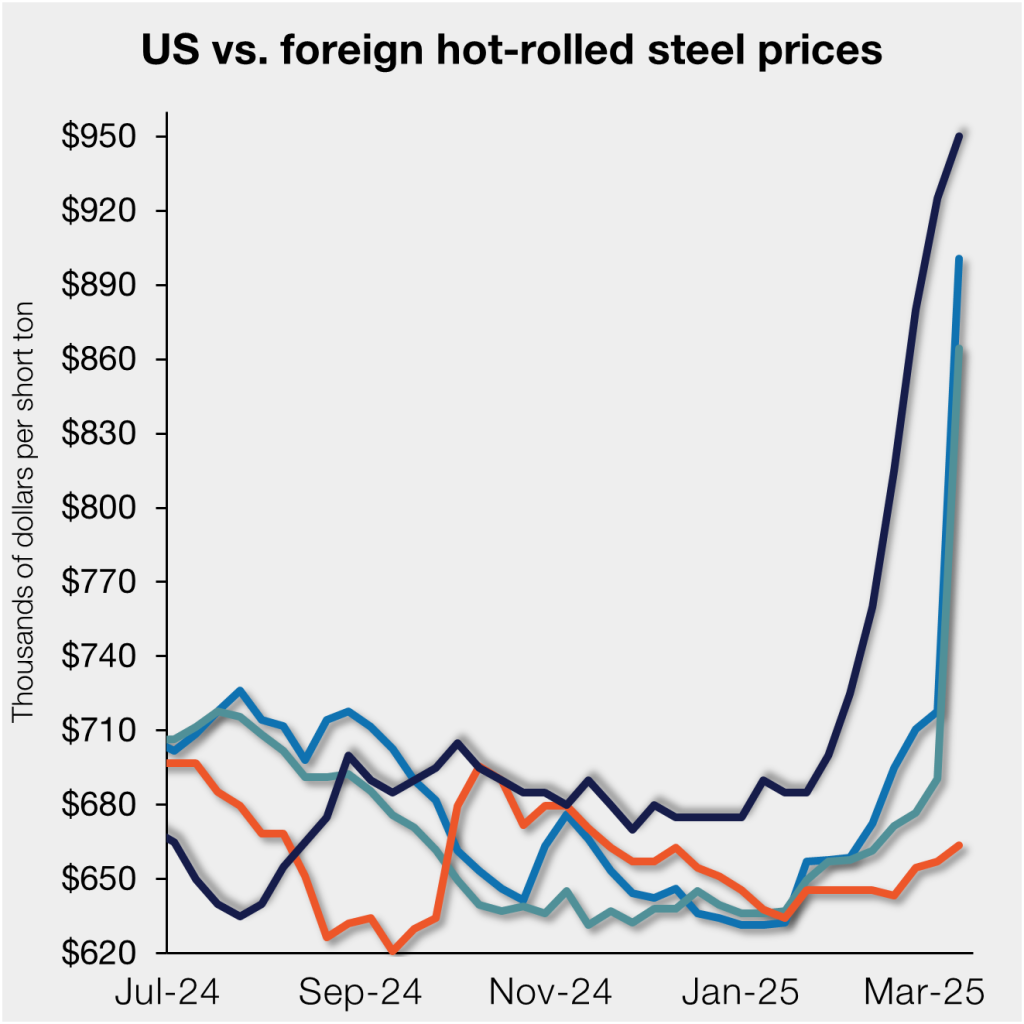
March 13, 2025
Gap between US HR and offshore prices narrows on S232 reinstatement
Written by David Schollaert
Domestic hot-rolled (HR) coil prices moved higher this week, still largely outpacing increases seen in offshore markets.
But the reinstatement of undiluted Section 232 tariffs on steel on March 12 cut the ballooning premium stateside prices had gained on most imports on a landed basis.
The premium stateside tags had over prices abroad stood at a 15-month high last week. It fell by nearly ten percentage points on Wednesday, when S232 tariffs were restored.
Recall, the measure imposed a 25% tax on all steel and aluminum imports entering the US – including from countries such as Canada and Mexico that were previously exempt from it.
SMU’s average domestic HR price this week was $950 per short ton (st), up $25/st vs. the week before and up more than $265/st since late January. And emboldened by tariffs, domestic mills continue to try to move prices higher. The result: US hot band prices now stand at their highest point since February 2024.
Domestic HR is now theoretically 14.7% more expensive than imported material, down from 25.5% last week. Stateside hot band had its widest margin over imports last week since December 2023. The margin immediately fell 10.8 percentage points once S232 took effect on Wednesday.
In dollar-per-ton terms, US HR is now, on average, $140/st more expensive than offshore product (see Figure 1). That’s roughly $100/st lower than the prior week.
The charts below compare HR prices in the US, Germany, Italy, and Asia. The left side highlights prices over the last two years and the right side zooms in to show more recent trends.
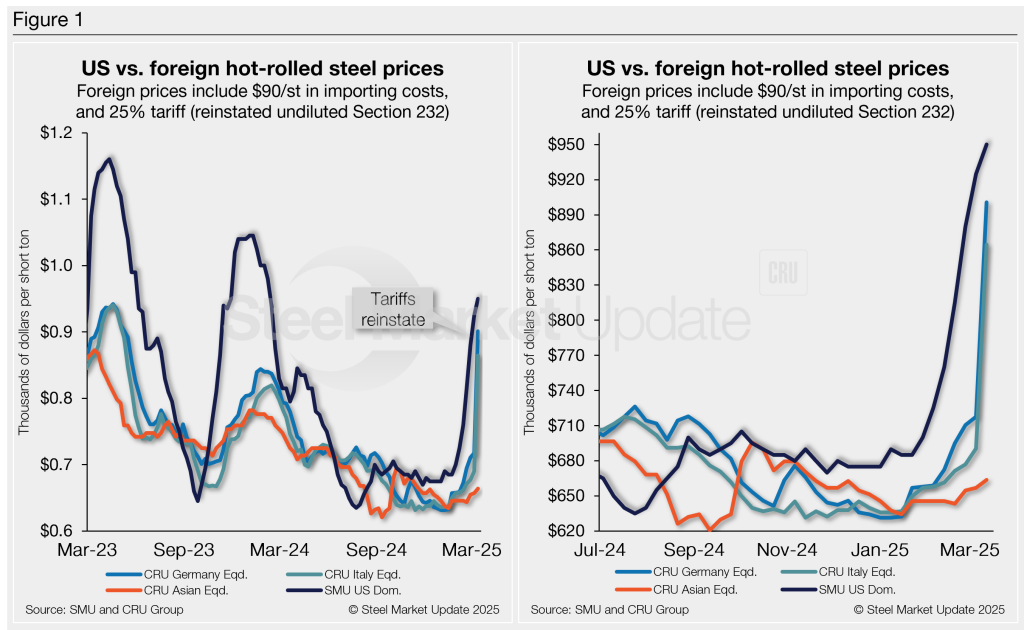
Methodology
This is how SMU calculates the theoretical spread between domestic HR coil prices (FOB domestic mills) and foreign HR coil prices (delivered to US ports): We compare SMU’s weekly US HR assessment to the CRU HR weekly indices for Germany, Italy, and East and Southeast Asian ports. This is only a theoretical calculation. Import costs can vary greatly, influencing the true market spread.
In addition to the 25% blanket tariff, we add a $90/st to all foreign prices as a rough means of accounting for freight costs, handling, and trader margin. This gives us an approximate CIF US ports price to compare to the SMU domestic HR coil price. Buyers should use our $90/st figure as a benchmark and adjust up or down based on their own shipping and handling costs.
If you import steel and want to share your thoughts on these costs, please get in touch with the author at david@steelmarketupdate.com.
Asian HRC (East and Southeast Asian ports)
As of Thursday, March 13, the CRU Asian HRC price was $459/st, up just $5/st vs. the week prior. Adding a 25% tariff and $90/st in estimated import costs, the delivered price of Asian HRC to the US is ~$664/st. As noted above, the latest SMU US HR price is $950/st on average.
The result: Prices for US-produced HR are theoretically $286/st higher than steel imported from Asia – roughly $18/st higher week over week (w/w). The premium is now in line with recent highs seen in 2023 when stateside tags were ~$300 /st more expensive than Asian products.
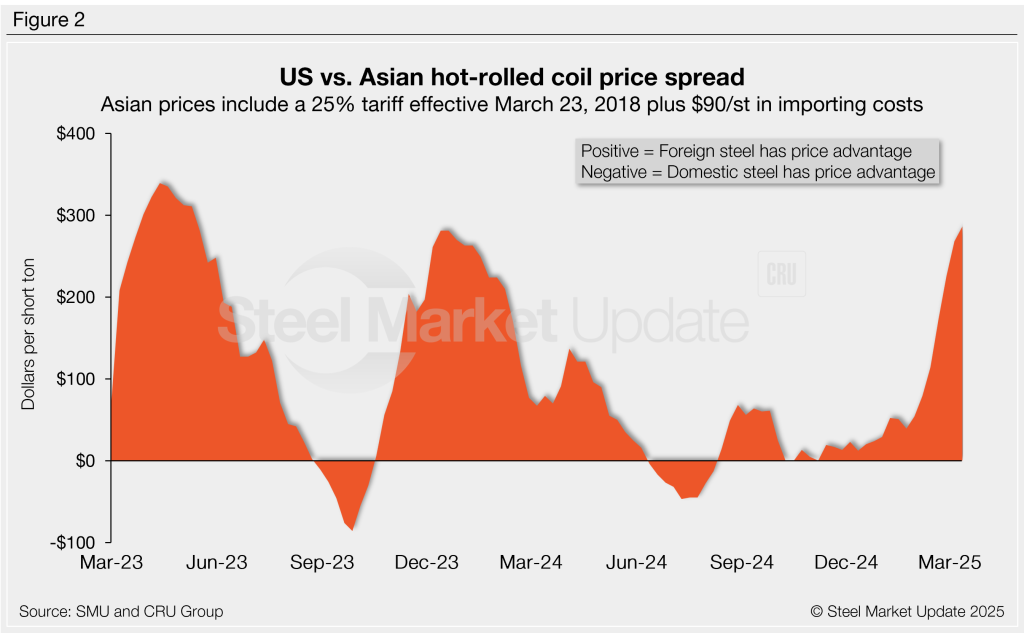
Italian HRC
Italian HR prices were $19/st higher this week at $620/st, according to CRU. After reintroducing a 25% tariff and $90/st in estimated import costs, the delivered price of Italian HR is, in theory, $865/st. That’s an increase of $174/st w/w.
That means domestic HR coil is theoretically $85/st more expensive than imports from Italy – a $149/st swing from last week when stateside prices were in theory $234/st above Italian imports.
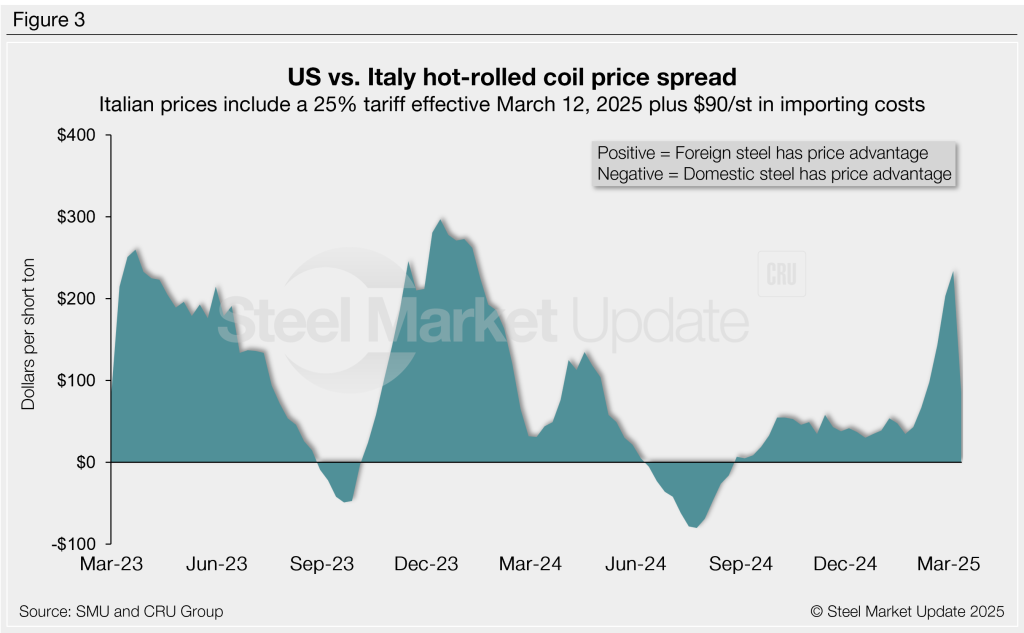
German HRC
CRU’s German HR price was up $21/st to $649/st this week. After adding a 25% tariff and $90/st import costs, the delivered price of German HR coil is, in theory, $901/st.
The result: Domestic HR is theoretically just $49/st more expensive than HR imported from Germany, down $158/st from last week. Stateside hot band was at a $207/st premium last week – its widest margin in 14 months.
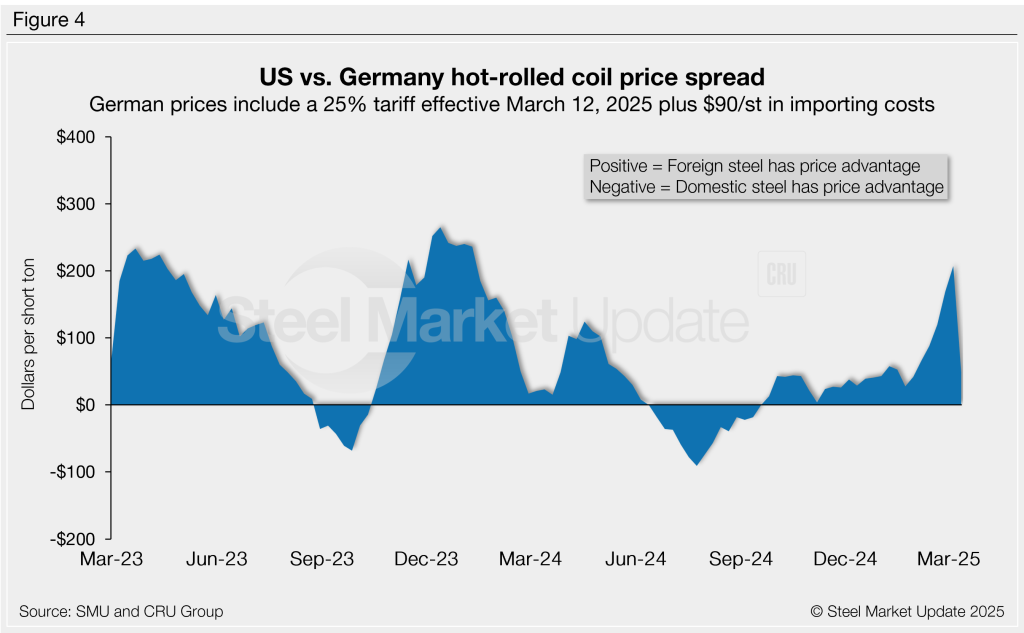
Notes: Freight is important when deciding whether to import foreign steel or buy from a domestic mill. Domestic prices are referenced as FOB the producing mill. Foreign prices are CIF, the port (Houston, NOLA, Savannah, Los Angeles, Camden, etc.). Inland freight, from either a domestic mill or from the port, can dramatically impact the competitiveness of both domestic and foreign steel. It’s also important to factor in lead times. In most markets, domestic steel will deliver more quickly than foreign steel. Effective March 12, 2025, undiluted Section 232 tariffs were reinstated on steel. All steel imports and many derivative products now face a 25% tariff. Therefore, the German and Italian price comparisons in this analysis now include a 25% tariff. We do not include any antidumping (AD) or countervailing duties (CVD) in this analysis.




